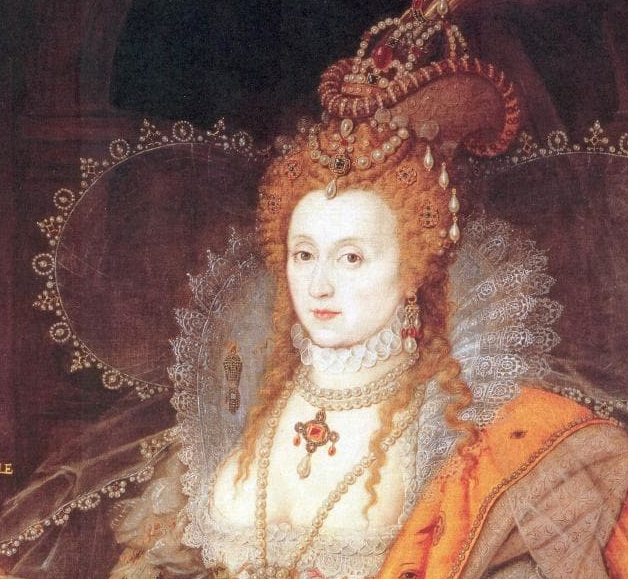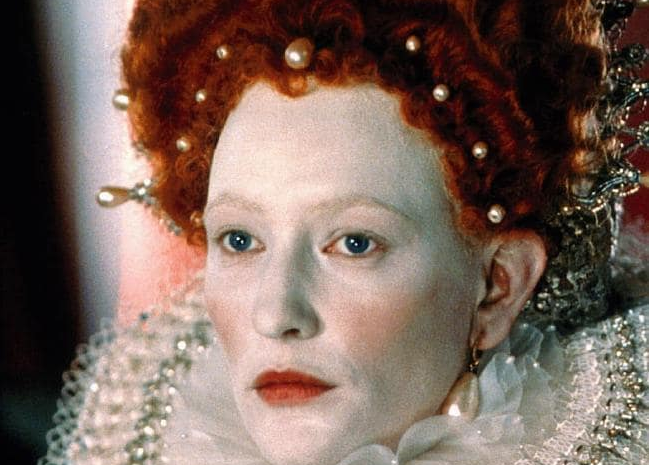Almost 500 years ago Queen Elizabeth was struck down with a violent fever. What happened next would change the course of history.
When Queen Elizabeth I was 29, in 1562, she was struck down with what was believed to be a violent fever.
Ordered by doctors to remain in her bed at Hampton Court Palace, it was soon clear that her illness was more than just a fever ? she had the dreaded smallpox.
Smallpox was a feared, deadly, viral disease that was highly contagious. There was no cure and no treatment. As recently as the 1960s, around 12 million people caught the disease and around two million people died every year.
Small pox was eventually eradicated by immunisation in 1980 but the story behind the vaccine is fascinating.
What began as an illness led to a rash that developed in small blisters or pustules that would split before drying and forming a scab that left scars.
It was 457 years ago that Elizabeth came close to death but the aftermath of the disease that nearly killed her led to the iconic makeup style, that makes Queen Elizabeth one of the most recognisable monarchs of British royal history.
 Margot Robbie as Queen Elizabeth I in the film ?Mary Queen of Scots.? Picture: Focus Features Source:Supplied
Margot Robbie as Queen Elizabeth I in the film ?Mary Queen of Scots.? Picture: Focus Features Source:Supplied
The Dreaded Pox
In the early stages of smallpox, the Queen refused to believe that she could possibly have contracted such a dreadful disease.
Author Anna Whitelock wrote in The Queen?s Bed: An intimate history of Elizabeth?s court that a notable German physician, Dr Burcot, was invited to the Queen?s sick bed.
When he diagnosed smallpox, the Queen sent him away, accusing him of being incompetent. Apparently the word ?fool? was uttered from the royal lips too.
However, as Elizabeth?s health declined further, Dr Burcot was asked to make another visit to the Queen where he diagnosed small pox a second time.
??Tis the pox,? he replied, at which Elizabeth moaned, ?God?s pestilence! Which is better? To have the pox in the hand or in the face or in the heart and kill the whole body???
Eventually, the Queen became so ill she could barely speak and seven days into her sickness, it was feared the she was going to die.
Her ministers hastily discussed a succession plan. Since the Queen had no children, there was great concern about succession if Elizabeth suddenly died. The risk of Elizabeth losing her battle with smallpox was high, as around 30 per cent of those with the disease would die from it and very few escaped the illness without dreadful scarring from the skin lesions.
At the time of her illness, Elizabeth?s most likely heir was Mary, Queen of Scots. But due to Mary being a Catholic, many British Protestants were concerned about the repercussions of having a Catholic on the throne.
But the issue of succession was put aside for another time, as Elizabeth did recover. And, while her face was scarred, she wasn?t terribly disfigured.
Spare a thought for her loyal lady-in-waiting Mary Sidney, who spent hours by the Queen?s sick bed, making sure she had plenty of water and tea and being a constant comfort for her. It was no surprise that Sidney caught ?the dreaded pox?, leaving her disfigured for life.
 The Rainbow Portrait of Queen Elizabeth I by Isaac Oliver. Picture: Alamy Source:Alamy
The Rainbow Portrait of Queen Elizabeth I by Isaac Oliver. Picture: Alamy Source:Alamy
Restoring the Queen?s beauty
When she eventually rose from her sick bed, Elizabeth set about ensuring her beauty was restored. She had always been celebrated for her glamour, her elaborate clothing and her white flawless skin.
But, after her brush with death via smallpox, the Queen was left with a lifelong reminder of her illness; she was devastated when she realised that her skin would always bear the scars of the disease that almost took her life.
It must have been soul destroying for a woman who believed that much of her power was due to her beauty. So, she began by covering her pockmarks with heavy white makeup.
She used what was known as the ?venetian ceruse?, a mixture of vinegar and lead; a potential killer.
Author Lisa Eldridge wrote in her book Face Paint that archaeologists have found traces of white lead in the graves of upper-class women who lived as far back as ancient Greece. It?s also believed ceruse was used in China in the ancient Shang Dynasty (1600?1046 B.C.)
At the time of Queen Elizabeth?s reign, women strived for a totally white face because it symbolised youth and fertility. It?s been argued that the desire for a white face had nothing to do with racism and everything to do with class ? if a woman had a white face, it was a clear sign that she has never had to work outdoors.
So how did the ladies achieve the look that writer Inkoo Kang described as being ?perilously close to Ronald McDonald cosplay??
Most ladies slathered the Venetian Ceruse across the face, neck and dcolletage. Clearly, the major problem with this makeup was due to the lead ingredient and, if used over an extended period of time, caused illness and/or death.
Here?s a popular YouTube makeup tutorial that recreates the Queen?s iconic look:
If the makeup didn?t kill you or make you ill, it would make your skin appear grey and wrinkled once the makeup was removed. To make it worse, the white makeup was left on the skin for a very long time without being washed. Ladies left it on their face for at least a week before cleaning themselves.
But, even the ingredients in the commonly used facial cleanser had the potential to kill ? rosewater, mercury, honey and even eggshells were used. The ladies might have felt this concoction left their skin feeling soft and smooth, but the mercury meant that the cleanser was actually eating away their skin.
To top off the look, Elizabeth also used bright red pigments on her lips that contained additional heavy metals. It was also fashionable to line your eyes with black kohl, and use special eyedrops known as ?belladonna? which dilated the pupils.
Eyebrows were plucked until they were thin and arched, creating the appearance of a high forehead, which supposedly made women look not only intelligent but from the upper class. Plants and animal dyes were used for rouge, making the cheeks glow.
 When she eventually rose from her sick bed, Elizabeth set about ensuring her beauty was restored. Picture: AlamySource:Alamy
When she eventually rose from her sick bed, Elizabeth set about ensuring her beauty was restored. Picture: AlamySource:Alamy
Public image of the Queen
Elizabeth was highly aware of the importance of her appearance in public and went to great pains to achieve the look she believed suited her the best, making her not only attractive but clearly regal.
She also insisted on being in control of her official portraits which is why a recent exhibition at London?s Queen?s House in Greenwich has found a way to undo Elizabeth?s carefully crafted image.
The art installation explores the ?other face? of the Queen, showing her face stripped of makeup. It?s the face of a woman looking vulnerable as she exists in a patriarchal world where she was only safe if she could hold onto her power.
It?s fascinating to see what she looked like without her mask of makeup and many believe it was the lead in her foundation that led to her death at the age of 69, on March 24, 1603.
While the exact cause of Elizabeth?s death is debatable ? possible causes include blood poisoning, pneumonia, or cancer ? she lost most of her hair and was said to be highly fatigued as well as suffering from memory loss and digestive problems; symptoms of lead poisoning.
What?s not up for debate is the fact that, as she aged, she applied more and more layers of makeup to her face; the never-ending bid to disguise oneself using the deadly ?mask of youth?.


